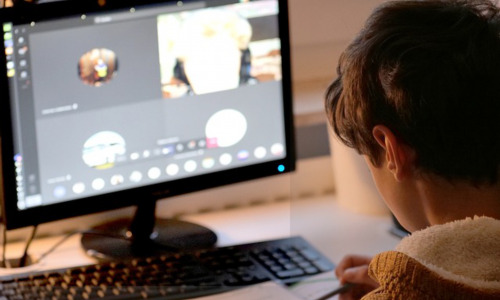中考学生怎么保护视力英语
The pressure of the upcoming Zhongkao (junior high school entrance examination) can be immense for students. Long hours spent studying, often in dimly lit rooms hunched over textbooks and screens, take a significant toll on their eyesight. Protecting their vision during this crucial period is not just about maintaining clear sight; it's about ensuring their overall well-being and ability to perform their best academically. Ignoring eye health can lead to headaches, fatigue, reduced concentration – all detrimental factors when facing the challenges of the Zhongkao. Therefore, a proactive and comprehensive approach to eye care is absolutely essential. This isn't just about occasional eye drops or breaks; it’s about cultivating healthy habits that will benefit them long after the exams are over. This article will explore practical strategies and actionable advice, presented in clear and understandable English, to help Zhongkao students safeguard their precious eyesight. We will delve into the importance of proper lighting, the dangers of excessive screen time, the benefits of regular breaks, and the significance of seeking professional eye care. Ultimately, the goal is to empower students and their families with the knowledge and tools necessary to protect their vision and ensure their success during this demanding period.
 Lighting is Key: Adequate and appropriate lighting is paramount. Study areas should be brightly lit, preferably with natural light. Avoid harsh, glaring lights that can strain the eyes. A soft, diffused light source, like a desk lamp with a shade, is ideal. Ensure the light source is positioned to avoid glare on screens or books. If studying at night, use a warm-toned light to minimize eye strain.
Lighting is Key: Adequate and appropriate lighting is paramount. Study areas should be brightly lit, preferably with natural light. Avoid harsh, glaring lights that can strain the eyes. A soft, diffused light source, like a desk lamp with a shade, is ideal. Ensure the light source is positioned to avoid glare on screens or books. If studying at night, use a warm-toned light to minimize eye strain.
Screen Time Management: The digital age presents a significant challenge to eye health. Excessive screen time, whether from smartphones, computers, or tablets, contributes significantly to eye strain, dry eyes, and even nearsightedness. Students should consciously limit their screen time. Take regular breaks every 20-30 minutes, following the "20-20-20 rule": look at an object 20 feet away for 20 seconds every 20 minutes. Consider using blue light filtering glasses or adjusting screen settings to reduce blue light emission, particularly during evening hours.

The Importance of Breaks: Regular breaks are crucial for preventing eye strain and maintaining focus. Encourage students to step away from their studies every hour for at least 10-15 minutes. This allows their eyes to rest and refocus. During these breaks, they can perform simple eye exercises, look at distant objects, or simply walk around to improve blood circulation. Physical activity is also important for maintaining overall health and reducing eye strain.
Nutrition and Hydration: A healthy diet rich in fruits and vegetables, particularly those containing vitamins A, C, and E, supports good eye health. These vitamins are antioxidants that protect the eyes from damage. Ensure adequate hydration by drinking plenty of water throughout the day. Dehydration can contribute to dry eyes and eye fatigue.
Eye Exercises: Simple eye exercises can help to relieve eye strain and improve focus. These exercises can include palming (covering closed eyes with warm palms), focusing on near and distant objects, and rolling the eyes in a circular motion. Regularly incorporating these exercises into their study routine can make a noticeable difference.
Professional Eye Care: Regular eye exams are vital, especially during periods of intense academic pressure. Schedule a comprehensive eye exam with an ophthalmologist or optometrist to detect any potential problems early on. Early detection and treatment of eye conditions are crucial for preventing vision impairment. Don't hesitate to seek professional advice if they experience any persistent eye discomfort or changes in vision.
Ergonomics: Proper posture is key to preventing neck and back pain, which can indirectly contribute to eye strain. Students should maintain good posture while studying, ensuring their screens are at eye level and their backs are supported. Using ergonomic chairs and desks can significantly improve comfort and reduce eye strain.
Sleep is Essential: Adequate sleep is crucial for overall health, including eye health. During sleep, the eyes rest and repair themselves. Students should aim for 8-10 hours of quality sleep each night. A consistent sleep schedule is important for regulating the body's natural sleep-wake cycle.
By diligently following these guidelines, Zhongkao students can significantly reduce their risk of eye strain and maintain optimal vision throughout their exam preparations. Remember that protecting their eyesight is an investment in their present well-being and their future success. Encourage open communication about any eye-related concerns, and prioritize proactive eye care throughout this demanding phase of their lives.
Protecting Your Vision: Beyond the Zhongkao
The strategies for maintaining good eye health extend far beyond the intense study period leading up to the Zhongkao. Developing healthy habits for eye care is a lifelong endeavor that will benefit students long after they've completed their examinations. This section will explore how to cultivate these habits for lasting eye health.
Understanding Eye Conditions: It's important for students to be aware of common eye conditions like myopia (nearsightedness), hyperopia (farsightedness), astigmatism (blurred vision), and dry eye syndrome. Knowing the symptoms and seeking professional help when necessary are crucial for effective management and prevention of vision problems. Regular eye examinations can help detect these conditions early, allowing for timely intervention.

Beyond the 20-20-20 Rule: While the 20-20-20 rule is a good starting point, it’s important to personalize break frequency based on individual needs. If a student experiences significant eye strain even with regular breaks, they should consult an eye care professional. They may benefit from personalized strategies beyond simple breaks.
The Power of Outdoor Time: Studies have shown a strong correlation between time spent outdoors and a reduced risk of myopia. Encourage students to spend time outdoors, engaging in activities that don't require close-up focus. The natural light and distance focusing can help protect their vision.
Digital Detox Days: In today's digital world, it's essential to incorporate regular "digital detox" days or periods. These periods should be free from screens as much as possible, allowing the eyes to rest and the mind to relax. This can be especially beneficial after long periods of intense study.
Mindfulness and Stress Reduction: Stress can significantly impact eye health. Encouraging students to practice stress-reducing techniques, such as mindfulness, yoga, or meditation, can improve overall well-being and reduce eye strain associated with stress and anxiety.
Future-Proofing Eye Health: The habits developed during the Zhongkao preparation period can be carried forward into higher education and beyond. Continuing to prioritize regular eye exams, maintaining a healthy lifestyle, and managing screen time will help prevent future vision problems. This proactive approach is crucial for long-term eye health.
By implementing these long-term strategies, students can develop sustainable habits that will benefit their eye health for many years to come. Remember that protecting your vision is an ongoing process that requires consistent effort and attention. By understanding the underlying principles of eye care and actively working to implement them, students can pave the way for a lifetime of healthy vision.


评论